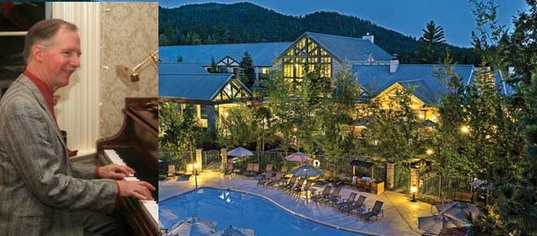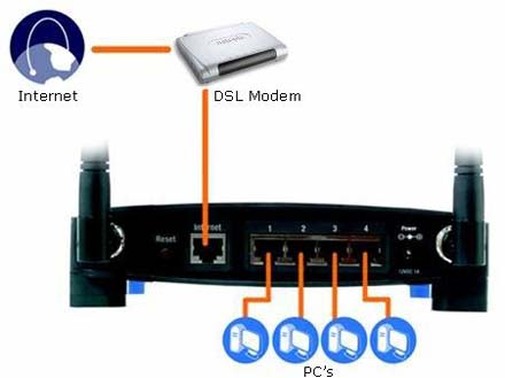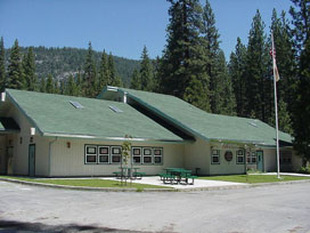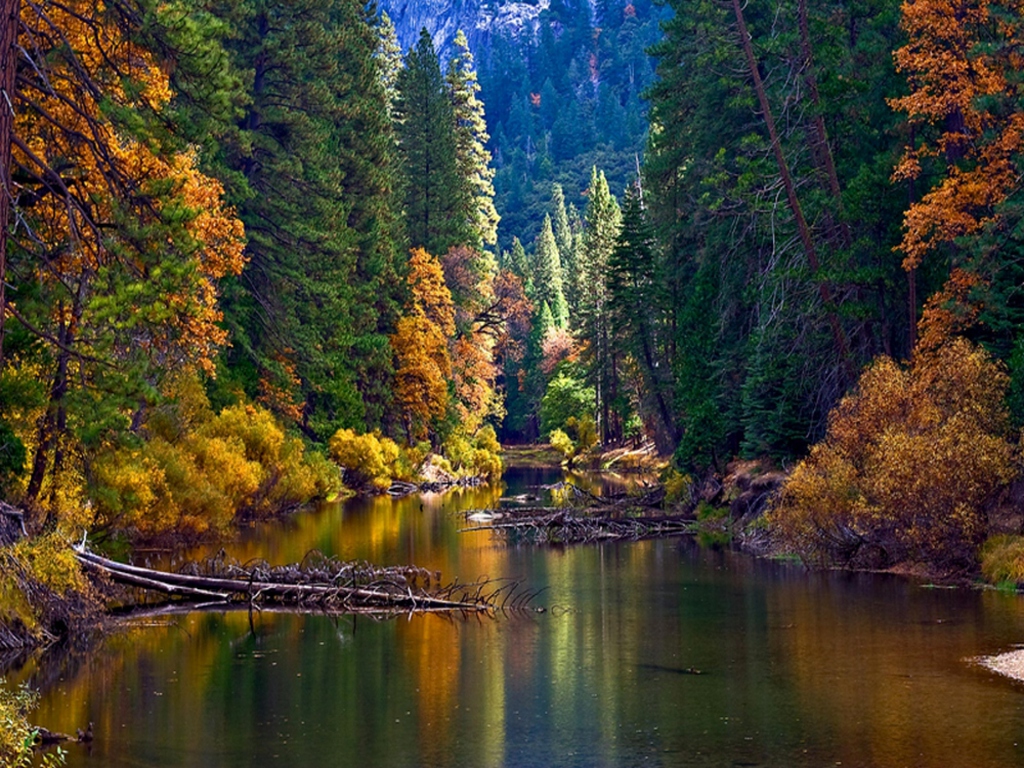WawonaNews.com - February 2014
Yosemite National Park Announces the Release of the Merced Wild and Scenic River Final Comprehensive Management Plan and Environmental Impact Statement
February 14, 2014
Comprehensive Management Plan will provide access and protect Merced River resources Yosemite National Park announces the release of the Merced Wild and Scenic River Final Comprehensive Management Plan and Environmental Impact Statement (EIS). “This plan will protect the Merced River and its outstandingly remarkable values into perpetuity and provide quality visitor facilities and access,” stated Don Neubacher, Yosemite Superintendent. “The planning process has been a monumental effort and we appreciate all the public input we have received. We now want to move forward with actions in the Plan that are critical to the preservation and enjoyment of this iconic national treasure.” The Merced River was designated a Wild and Scenic River by the U. S. Congress in 1987 to preserve its free flowing condition, water quality and outstandingly remarkable values. Under the Wild and Scenic Rivers Act, Yosemite National Park is required to develop a management plan to protect and enhance the 81 miles of the Merced River that are within the park. More than 30,000 comments were received on the draft plan during a formal public comment period, which ran from January 8, 2013 through April 30, 2013. Public involvement has been a cornerstone of the planning process. Throughout plan development, the park conducted more than 60 public meetings, both in the park, and throughout the state. The park also conducted several webinars to help people understand some of the more complex elements of the plan so they could provide informed comments. Many of the changes between the draft and final plan were the direct result of concerns raised during public meetings, agency and tribal consultation, and in public comments. “We spent thousands of hours reading and responding to comments to make sure we understood everyone’s concerns. The preferred alternative was modified to accommodate many of the changes requested during the public review,” stated Kathleen Morse, Yosemite Chief of Planning. “This final plan integrates the ideas of a passionate public with proven stewardship practices and the best available science to create a powerful vision for the future of the Merced River and Yosemite Valley.” The final preferred alternative (Alternative 5: Enhanced Visitor Experience and Essential Riverbank Restoration) is based on guiding principles that include restoring natural conditions to riparian areas, riverbanks and meadows, modifying the transportation system to provide a better visitor experience in Yosemite Valley, enhancing recreational opportunities, and reducing or eliminating unnecessary facilities and services in the river corridor. Under the selected alternative, visitors to Yosemite Valley will see marked improvements in the transportation system, including more efficient parking and traffic flow. Coupled with enhancements to meadows, improvements to river access, and extensive riverbank restoration, the visitor experience will be significantly improved. Visitors to Yosemite Village will experience an enhanced “sense of arrival” to the heart of Yosemite Valley, as the plan fully integrates the primary day-use parking area with pathways to visitor services, restrooms, and food service. The selected alternative will protect and enhance river values through essential ecological restoration of riverbanks and riparian and meadow habitat. Abandoned infrastructure within the bed and banks of the river will be removed, along with campsites and associated infrastructure within 100 feet of the river; these areas will be ecologically restored. This alternative will also establish a valley oak habitat protection area in El Portal. Further study will be conducted to assess the alluvial processes of the Merced River and develop a strategy for addressing the hydraulic constriction associated with the historic Sugar Pine Bridge. The connection between meadows and the riparian floodplain throughout the Valley will be enhanced with engineering and design treatments, including the installation of large box culverts and permeable subgrades to improve surface water flow. Recreational activities, such as rafting, bicycling, and ice skating will continue, with rental facilities and services provided at locations outside of the river corridor. With watercraft allowed on eight miles of the Merced River in Yosemite Valley, boaters will be able to float new and challenging reaches of water framed by views of El Capitan and Half Dome. Valley stables will be active, servicing the High Sierra camp and supporting NPS administrative activities. Private horseback riding and boarding will continue in Yosemite Valley and further into the high country. Families will enjoy expanded camping opportunities in East Yosemite Valley, with new walk-in campsites provided east of Camp 4, at Upper Pines, and at the location of the former Upper and Lower River campgrounds. More drive-in campsites (including some RV sites) will be provided in new camping areas at Upper Pines and Lower River (adjacent to the road) and at El Portal. Housekeeping Camp will continue to offer an alternative to camping, with improved access to the nearby beach and picnicking area. The visual distraction caused by substandard temporary housing at Curry Village will be eliminated. Similar improvements will be noticed at Yosemite Lodge, with the replacement of temporary modular housing with permanent, rustically designed, current code-compliant housing. Redundant services, such as the Village Sports Shop, the Lodge Nature Shop, and the Yosemite Lodge post office will be eliminated and replaced with visitor information and interpretive functions. Overall, the visitor will discover a less cluttered and confused Yosemite Valley experience with ample opportunity to enjoy the river and its values without diminishing their quality. West Yosemite Valley will retain its overall natural character with limited facilities and services provided. This peaceful setting will continue to serve as a destination for low-impact recreational activities such as hiking, rock climbing, photography, and wildlife viewing. Backcountry enthusiasts traveling through the Merced River corridor will find designated camping at Little Yosemite Valley, Moraine Dome, and Merced Lake. Visitors to Yosemite Wilderness will have the option of staying at a smaller Merced Lake High Sierra camp and continuing on to other High Sierra Camps or exiting to the Valley. Visitors to Wawona will continue to enjoy the historic Hotel, swimming pool and tennis courts. Recreational activities will include camping, commercial horseback day rides from the Wawona stables, golfing, swimming, picnicking, and boating the South Fork Merced. Specific highlights of the Final Merced River Plan include: Protecting the Merced River’s Health and Other Resources
Comprehensive Management Plan will provide access and protect Merced River resources Yosemite National Park announces the release of the Merced Wild and Scenic River Final Comprehensive Management Plan and Environmental Impact Statement (EIS). “This plan will protect the Merced River and its outstandingly remarkable values into perpetuity and provide quality visitor facilities and access,” stated Don Neubacher, Yosemite Superintendent. “The planning process has been a monumental effort and we appreciate all the public input we have received. We now want to move forward with actions in the Plan that are critical to the preservation and enjoyment of this iconic national treasure.” The Merced River was designated a Wild and Scenic River by the U. S. Congress in 1987 to preserve its free flowing condition, water quality and outstandingly remarkable values. Under the Wild and Scenic Rivers Act, Yosemite National Park is required to develop a management plan to protect and enhance the 81 miles of the Merced River that are within the park. More than 30,000 comments were received on the draft plan during a formal public comment period, which ran from January 8, 2013 through April 30, 2013. Public involvement has been a cornerstone of the planning process. Throughout plan development, the park conducted more than 60 public meetings, both in the park, and throughout the state. The park also conducted several webinars to help people understand some of the more complex elements of the plan so they could provide informed comments. Many of the changes between the draft and final plan were the direct result of concerns raised during public meetings, agency and tribal consultation, and in public comments. “We spent thousands of hours reading and responding to comments to make sure we understood everyone’s concerns. The preferred alternative was modified to accommodate many of the changes requested during the public review,” stated Kathleen Morse, Yosemite Chief of Planning. “This final plan integrates the ideas of a passionate public with proven stewardship practices and the best available science to create a powerful vision for the future of the Merced River and Yosemite Valley.” The final preferred alternative (Alternative 5: Enhanced Visitor Experience and Essential Riverbank Restoration) is based on guiding principles that include restoring natural conditions to riparian areas, riverbanks and meadows, modifying the transportation system to provide a better visitor experience in Yosemite Valley, enhancing recreational opportunities, and reducing or eliminating unnecessary facilities and services in the river corridor. Under the selected alternative, visitors to Yosemite Valley will see marked improvements in the transportation system, including more efficient parking and traffic flow. Coupled with enhancements to meadows, improvements to river access, and extensive riverbank restoration, the visitor experience will be significantly improved. Visitors to Yosemite Village will experience an enhanced “sense of arrival” to the heart of Yosemite Valley, as the plan fully integrates the primary day-use parking area with pathways to visitor services, restrooms, and food service. The selected alternative will protect and enhance river values through essential ecological restoration of riverbanks and riparian and meadow habitat. Abandoned infrastructure within the bed and banks of the river will be removed, along with campsites and associated infrastructure within 100 feet of the river; these areas will be ecologically restored. This alternative will also establish a valley oak habitat protection area in El Portal. Further study will be conducted to assess the alluvial processes of the Merced River and develop a strategy for addressing the hydraulic constriction associated with the historic Sugar Pine Bridge. The connection between meadows and the riparian floodplain throughout the Valley will be enhanced with engineering and design treatments, including the installation of large box culverts and permeable subgrades to improve surface water flow. Recreational activities, such as rafting, bicycling, and ice skating will continue, with rental facilities and services provided at locations outside of the river corridor. With watercraft allowed on eight miles of the Merced River in Yosemite Valley, boaters will be able to float new and challenging reaches of water framed by views of El Capitan and Half Dome. Valley stables will be active, servicing the High Sierra camp and supporting NPS administrative activities. Private horseback riding and boarding will continue in Yosemite Valley and further into the high country. Families will enjoy expanded camping opportunities in East Yosemite Valley, with new walk-in campsites provided east of Camp 4, at Upper Pines, and at the location of the former Upper and Lower River campgrounds. More drive-in campsites (including some RV sites) will be provided in new camping areas at Upper Pines and Lower River (adjacent to the road) and at El Portal. Housekeeping Camp will continue to offer an alternative to camping, with improved access to the nearby beach and picnicking area. The visual distraction caused by substandard temporary housing at Curry Village will be eliminated. Similar improvements will be noticed at Yosemite Lodge, with the replacement of temporary modular housing with permanent, rustically designed, current code-compliant housing. Redundant services, such as the Village Sports Shop, the Lodge Nature Shop, and the Yosemite Lodge post office will be eliminated and replaced with visitor information and interpretive functions. Overall, the visitor will discover a less cluttered and confused Yosemite Valley experience with ample opportunity to enjoy the river and its values without diminishing their quality. West Yosemite Valley will retain its overall natural character with limited facilities and services provided. This peaceful setting will continue to serve as a destination for low-impact recreational activities such as hiking, rock climbing, photography, and wildlife viewing. Backcountry enthusiasts traveling through the Merced River corridor will find designated camping at Little Yosemite Valley, Moraine Dome, and Merced Lake. Visitors to Yosemite Wilderness will have the option of staying at a smaller Merced Lake High Sierra camp and continuing on to other High Sierra Camps or exiting to the Valley. Visitors to Wawona will continue to enjoy the historic Hotel, swimming pool and tennis courts. Recreational activities will include camping, commercial horseback day rides from the Wawona stables, golfing, swimming, picnicking, and boating the South Fork Merced. Specific highlights of the Final Merced River Plan include: Protecting the Merced River’s Health and Other Resources
- Restoring 189 acres, mostly in meadows and riparian areas. This includes the removal of 6,048 linear feet of riprap (stones and cement in and near riverbeds used for stabilization).
- Improving meadow hydrology by removing artificial fill, filling ditches, and adding culverts.
- Planting native vegetation to stabilize riverbanks and improve scenic views along the river.
- Retaining the historic bridges.
- Implementing the Scenic Vista Management Plan to protect views from historic vista points.
- Removing informal trails, non-essential roads, and infrastructure causing impacts to archeological sites.
- Retaining and preserving the Awahnee Hotel, Wawona Hotel, Wawona Covered Bridge, LeConte Memorial Lodge, Merced Lake High Sierra Camp, and other historically significant properties.
- Camping will be increased by 37% in Yosemite Valley. This includes building 72 sites in the location of the former Upper and Lower River Campgrounds, 35 walk-in sites east of Camp 4, and 87 sites at the existing Upper Pines Campground. An additional 40 drive-in campsites will be provided at the Trailer Park Village in El Portal.
- The ice skating rink in Curry Village will be moved to its historical 1928 location outside of the river corridor.
- Lodging will be increased slightly corridorwide (3%) and in Yosemite Valley (5%).
- Bicycle and raft rentals will remain available in the park, with rental facilities located outside of the river corridor.
- Picnic and day-use opportunities will be improved and expanded at Yosemite Village, Church Bowl, and Happy Isles.
- Wawona stables services will be expanded.
- Additional shuttle bus service in Yosemite Valley will alleviate private vehicle congestion.
- Regional transit to the park will be expanded.
- Park roads will be rerouted to improve traffic flow and visitor safety by reducing vehicle-pedestrian conflicts.
- Significant changes to traffic circulation patterns will be made to meet ecological restoration goals and reduce traffic congestion.
- There will be an 8% increase in parking for day use visitors to Yosemite Valley. This increase includes a new 300-car parking lot located in El Portal with shuttle service to the Valley.
- Marked improvements in parking availability, traffic flow, and signage, along with the removal of administrative and industrial facilities will give visitors an enhanced “sense of arrival” to Yosemite Village and the heart of Yosemite Valley.
- Visitation levels will be similar to those seen over the past several years. A user capacity of 18,710 people at one time will be established for Yosemite Valley, which will accommodate a peak visitation of approximately 21,100 visitors per day.
- User capacity for East Yosemite Valley will be managed using advanced monitoring and communication systems and rerouting traffic at the El Capitan Traffic Diversion prior to reaching established limits.
- Overnight-use capacity will be managed through wilderness permits and reservation systems for lodging and camping.
Tom Bopp at Tenaya Lodge

TOM BOPP AT THE PIANO
6pm to 9pm
THE TENAYA LODGE LOBBY – FISH CAMP, CA
January 17-19 (Fri-Sun)
February 7-8 (Fri/Sat)
February 14-16 (Fri-Sun)
visit Tom Bopp's website: www.yosemitemusic.com
6pm to 9pm
THE TENAYA LODGE LOBBY – FISH CAMP, CA
January 17-19 (Fri-Sun)
February 7-8 (Fri/Sat)
February 14-16 (Fri-Sun)
visit Tom Bopp's website: www.yosemitemusic.com
Friendly Bear at Happy Isles
Halfway through a bike ride around the valley loop today (Jan.14) this character had the right of way.
Wawona Internet Access Issues

As a board member of the Wawona Area Property Owners Association (WAPOA), I am assisting in an effort to raise the awareness and need in Wawona to resolve the lack of new internet access and connection service. Specifically, to address with the appropriate parties the lack of current, consistent and sustainable DSL and internet connection service provided by the sole telephone service provider in Wawona- AT&T. Those with existing service may not be aware that AT&T will not provide new connection service. This is placing a hardship on those owners that wish to have the service. We want to encourage AT&T, without delay, to either finalize the infrastructure improvements necessary to support the required bandwidth need in the area (see link below), or see that the National Park and elected officials seek new third party vendor service technology and support so that these improvements are completed. Please note: National Park Service - PEPC - AT&T Wawona Office Bandwidth Upgrade for DSL Capacity - http://parkplanning.nps.gov/projectHome.cfm?projectID=22041 As the association representing the needs of all the owners in the Wawona area, WAPOA should take a lead role in making sure available telephone and internet service options are provided the residents and home owners.
As most know, a viable internet connection is critical to not only convenience and effective business communication, but as well safety related communication due to the remoteness of Wawona. Communication related to the continuity of internet service for medical issues, banking and even news and other disaster and emergency related communication on life threatening issues such as weather, fire, etc .
In order to communicate to the current service providers, National Park staff and elected officials on the need for their commitment in these regards, we are seeking information from residents and homeowners that we can include in our correspondence:
1. Understanding any additional specific needs for internet access
2. Specific responses homeowners received from AT&T
3. Successful alternatives to AT&T internet service As part of this effort, so that all private residential concerns in Yosemite are addressed, we will be reaching out to the Yosemite West Homeowner’s organization to seek their input and involvement too.
Any related emails can be sent to me at [email protected] Please note WAWONA INTERNET ACCESS ISSUES in the subject line of any email.
Thank you for your help.
Curt Castagna
As most know, a viable internet connection is critical to not only convenience and effective business communication, but as well safety related communication due to the remoteness of Wawona. Communication related to the continuity of internet service for medical issues, banking and even news and other disaster and emergency related communication on life threatening issues such as weather, fire, etc .
In order to communicate to the current service providers, National Park staff and elected officials on the need for their commitment in these regards, we are seeking information from residents and homeowners that we can include in our correspondence:
1. Understanding any additional specific needs for internet access
2. Specific responses homeowners received from AT&T
3. Successful alternatives to AT&T internet service As part of this effort, so that all private residential concerns in Yosemite are addressed, we will be reaching out to the Yosemite West Homeowner’s organization to seek their input and involvement too.
Any related emails can be sent to me at [email protected] Please note WAWONA INTERNET ACCESS ISSUES in the subject line of any email.
Thank you for your help.
Curt Castagna
Wawona School to Reopen Fall 2014 - Contributions Appreciated!

Dear Friends of Wawona School,
Happy Holidays! As you have hopefully heard, the Bass Lake School District approved our charter school proposal this past September, and as a result the Wawona School will "officially" re-open in the fall of 2014 as the Yosemite-Wawona Elementary Charter School. Much hard work has gone into this achievement by many, many people and we are so very grateful to you all!
Our local school will be open again for our community's children, however, as a charter school we will only receive funding per student (about $5000 per child) and not "necessary small school funding" as we did before. So our foundation will need to continue our fundraising efforts to supplement the state funding. If you have any plans of making end-of-the-year tax-related contributions, please keep Wawona School in mind. Our educational foundation is a non-profit, 501(c)(3), and our federal tax ID number is 20-1636147. We will give you a tax letter/receipt for your donation.
Our foundation's address is:
Yosemite-Wawona Education Foundation
P.O. Box 2101
Wawona, CA 95389
Thank you so much for your consideration and for your continued support!
Warmest regards,
Michelle Staufferand the Y-WEF board members: Ed Mee, Max Stauffer, Chad Andrews, Greg Royse, Lucy Royse
Happy Holidays! As you have hopefully heard, the Bass Lake School District approved our charter school proposal this past September, and as a result the Wawona School will "officially" re-open in the fall of 2014 as the Yosemite-Wawona Elementary Charter School. Much hard work has gone into this achievement by many, many people and we are so very grateful to you all!
Our local school will be open again for our community's children, however, as a charter school we will only receive funding per student (about $5000 per child) and not "necessary small school funding" as we did before. So our foundation will need to continue our fundraising efforts to supplement the state funding. If you have any plans of making end-of-the-year tax-related contributions, please keep Wawona School in mind. Our educational foundation is a non-profit, 501(c)(3), and our federal tax ID number is 20-1636147. We will give you a tax letter/receipt for your donation.
Our foundation's address is:
Yosemite-Wawona Education Foundation
P.O. Box 2101
Wawona, CA 95389
Thank you so much for your consideration and for your continued support!
Warmest regards,
Michelle Staufferand the Y-WEF board members: Ed Mee, Max Stauffer, Chad Andrews, Greg Royse, Lucy Royse
Santa Spotted on Spelt
Santa was spotted on Spelt Rd. on Dec. 21st carrying a Christmas tree from a home he considered not appropriate enough to another home he considered more suitable. Asked why he had embarked in such a wacky project, Santa said, "Look, it wasn't my idea, OK? You better talk to Mrs. Santa" (seen here by the side of the road, laughing at her husband).

